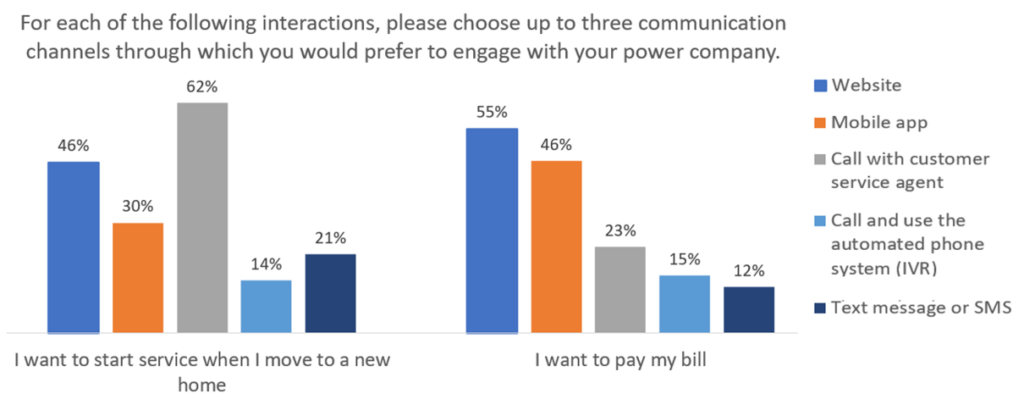Increasing Digital Self-Service Adoption to Reduce Call Volumes
By Heather Siebken, Senior Manager, Councils & Events
While consumer trends show a growing preference for self-service, especially for certain tasks, industry reports indicate that many customers still opt to call for utility-related needs. This is likely due to gaps in the digital experience, such as unclear navigation, limited functionality, or a lack of trust in automated solutions, making phone support feel like the easier and more reliable option.
Implementing a seamless and effective self-service experience is key to reducing call volumes while improving customer satisfaction. By enabling customers to resolve common issues independently, businesses can free up agents to focus on complex inquiries, ultimately lowering costs and enhancing service efficiency.
To drive adoption, companies should leverage post-transaction surveys and broader Voice of the Customer (VoC) insights to identify customer preferences, pain points, and usability gaps in self-service channels. Comparing these insights with common call drivers can help pinpoint areas where self-service options need improvement or expansion.
My advice is to enhance self-service channels with clear guidance, AI-powered chatbots, and personalized digital support to build customer confidence and drive engagement. Proactive education, such as onboarding tutorials and in-app prompts, can further encourage customers to use digital solutions over traditional phone support.
By refining the self-service experience based on customer insights, businesses can accelerate adoption, reduce call volumes, and create a more efficient and satisfying service journey for their customers.

Customers’ Communications Channels of Choice
Source: Chartwell 2024 Traditional Consumer Survey
Please contact Heather Siebken with any questions or to set up a meeting. To learn more about the Customer Experience Leadership Council, please contact Tim Herrick.






